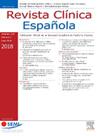肺超声在COVID-19后患者门诊随访中的作用。系统的文献审查
IF 1.7
4区 医学
Q2 MEDICINE, GENERAL & INTERNAL
引用次数: 0
摘要
目前,肺部超声在SARS-CoV-2肺炎患者出院后随访中的作用尚不清楚。本系统综述的主要目的是调查COVID-19肺炎患者肺部超声改变的持久性。方法根据2020年1月至2023年5月在PubMed、EMBASE、Web of Science和谷歌Scholar数据库中的PRISMA规定,使用MeSH术语组合:“肺超声”、“超声”、“肺改变”、“持续性”、“随访”、“后果”、“出院”、“COVID”、“COVID-19”、“SARS-CoV-2”进行系统综述。我们选择了描述COVID-19肺炎患者肺部超声改变的研究。使用JBI关键评估工具评估研究的偏倚风险。没有进行meta分析技术,结果被叙述比较。结果新型冠状病毒肺炎后2 ~ 6个月,肺部超声异常频繁出现,且与首发发作强度成正比。最常见的异常是胸膜线不规则,B线和/或胸膜下实变,主要发生在胸基底区。这些发现似乎与胸部CT的结果有关。结论超声在新冠肺炎患者出院后的研究中具有技术和经济优势。本文章由计算机程序翻译,如有差异,请以英文原文为准。
Papel de la ecografía pulmonar en el seguimiento ambulatorio de pacientes tras COVID-19. Revisión sistemática de la literatura
Introduction and aim
Currently, the usefulness of lung ultrasound in the follow-up of patients after hospital discharge for SARS-CoV-2 pneumonia is not well known. The main objective of this systematic review is to investigate the persistence of alterations in lung ultrasound of patients who have had COVID-19 pneumonia.
Methods
A systematic review has been carried out following the PRISMA regulations in the PubMed, EMBASE, Web of Science and Google Scholar database from January 2020 to May 2023 using the combination of MeSH terms: «lung ultrasound», «ultrasonography», «lung alterations», «persistence», «follow-up», «consequences», «hospital discharge», «COVID», «COVID-19», «SARS-CoV-2». Studies were selected that described alterations in the lung ultrasound of patients after having suffered from COVID-19 pneumonia. The JBI Critical Appraisal Tools were used to assess the risk of bias of the studies. No meta-analysis techniques were performed, the results being compared narratively.
Results
From two to six months after COVID-19 pneumonia, pulmonary ultrasound abnormalities appear frequently and are proportional to the intensity of the initial episode. The most frequent anomalies are irregularities in the pleural line, the presence of B lines and/or subpleural consolidations, predominantly in the basal regions of the thorax. These findings seem to correlate with those of the chest CT.
Conclusions
Lung ultrasound offers technical and economic advantages that should be considered for the study of patients after hospital discharge for COVID-19.
求助全文
通过发布文献求助,成功后即可免费获取论文全文。
去求助
来源期刊

Revista clinica espanola
医学-医学:内科
CiteScore
4.40
自引率
6.90%
发文量
73
审稿时长
28 days
期刊介绍:
Revista Clínica Española published its first issue in 1940 and is the body of expression of the Spanish Society of Internal Medicine (SEMI).
The journal fully endorses the goals of updating knowledge and facilitating the acquisition of key developments in internal medicine applied to clinical practice. Revista Clínica Española is subject to a thorough double blind review of the received articles written in Spanish or English. Nine issues are published each year, including mostly originals, reviews and consensus documents.
 求助内容:
求助内容: 应助结果提醒方式:
应助结果提醒方式:


